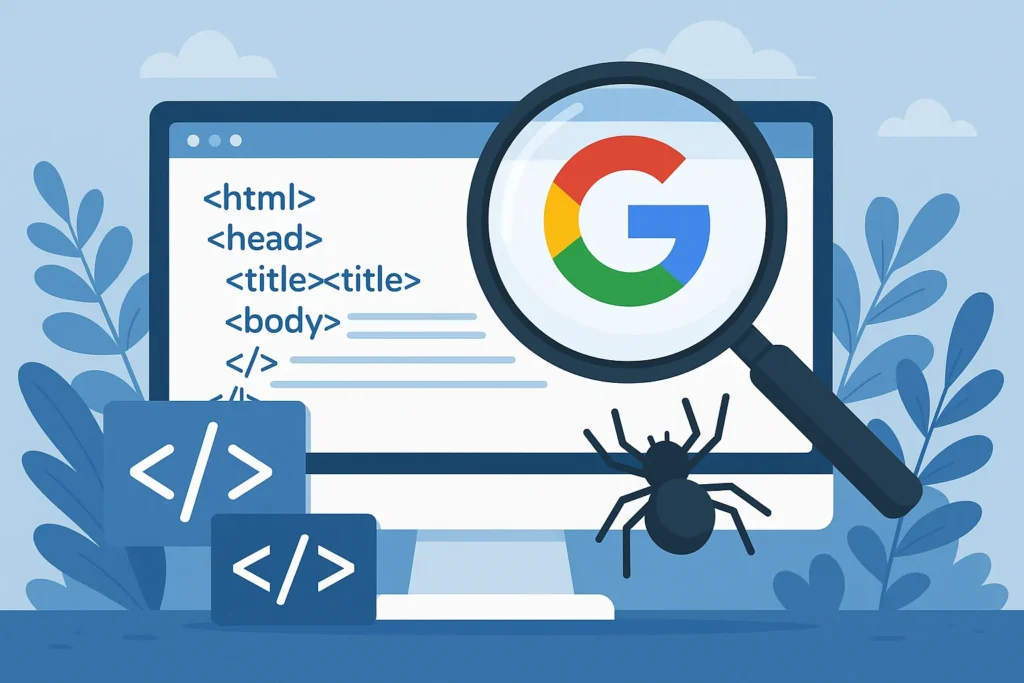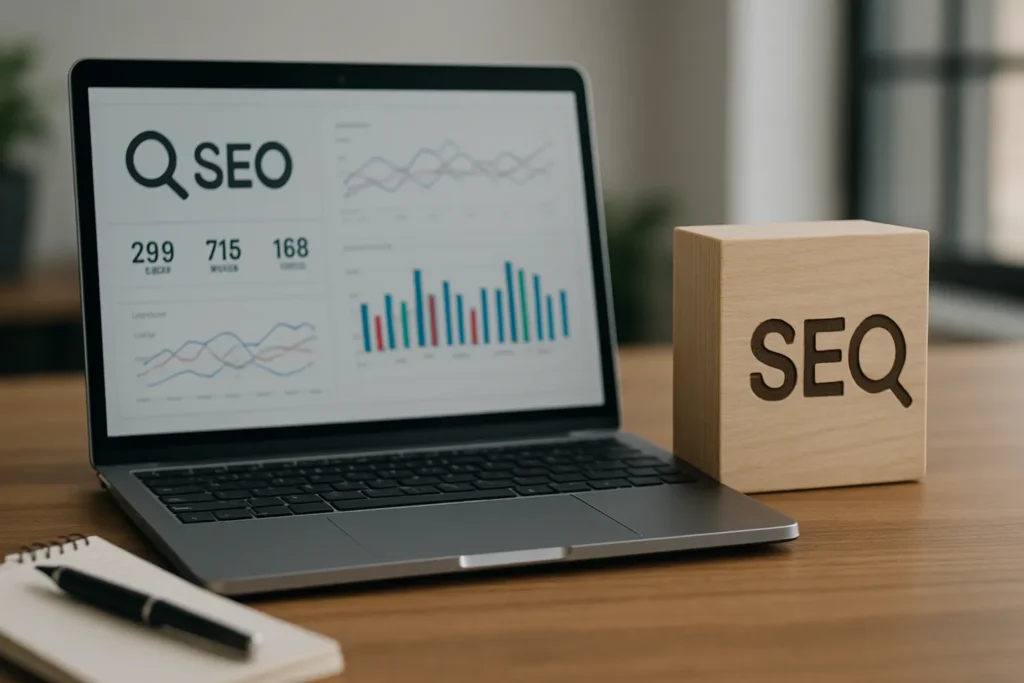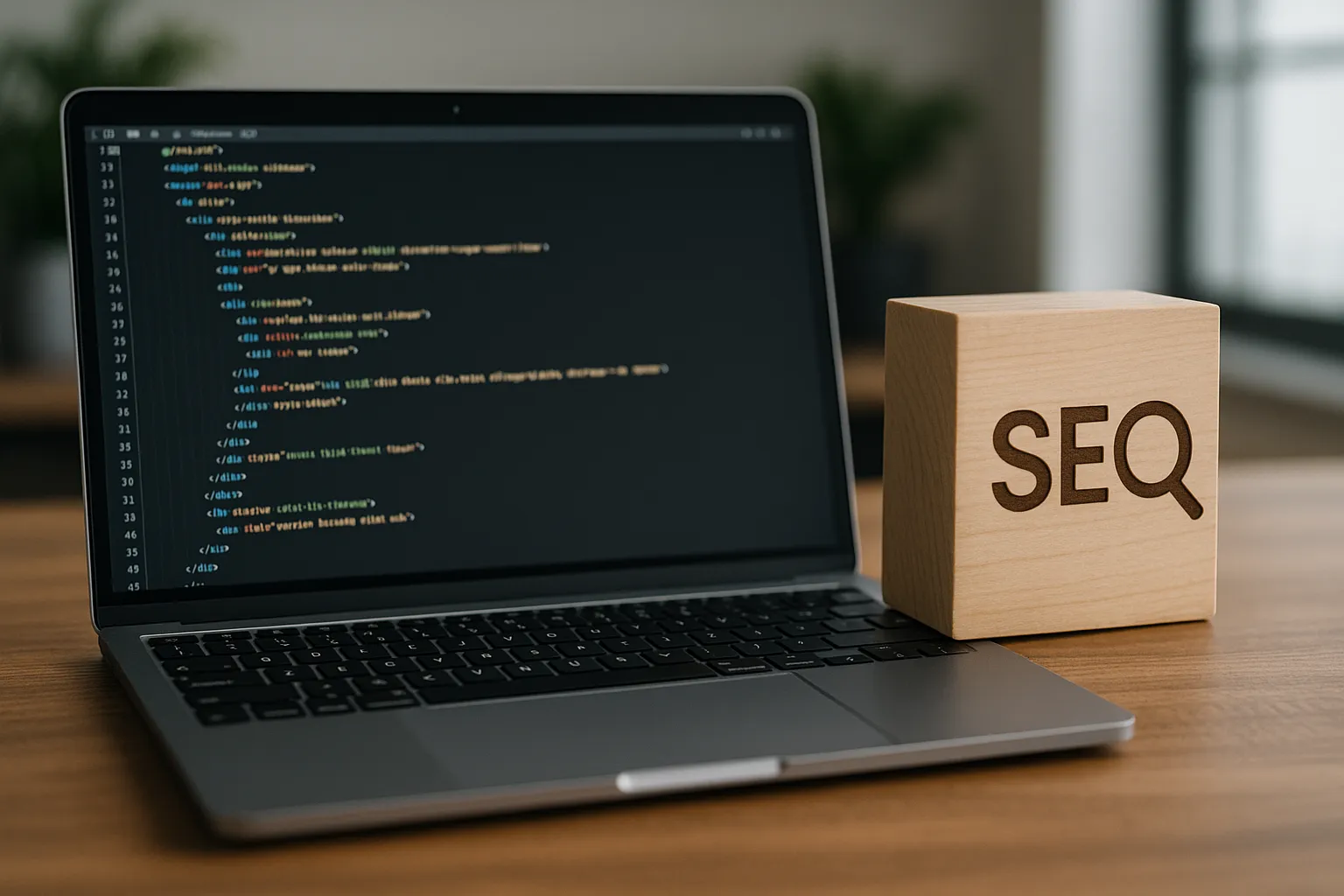Clean code boosts search engine optimisation (SEO) performance by creating a clear pathway for search engines to crawl, understand, and rank your website content effectively. This clean code in SEO approach means having a well-structured, lightweight website code that removes the barriers between your content and search engines.
So, here’s the thing: search engines like Google evaluate your site’s technical SEO health before determining rankings. When your code is clean and organised, it speeds up the crawling process and reduces technical SEO issues. Which means search engines can discover and process your valuable content much more smoothly.
That might sound complex, but don’t worry! Let’s break down everything about how clean code changes your search results visibility.
How Google Crawls Through Your Website’s Code Structure

Every time someone searches online, search engines need to quickly locate the most relevant content from millions of websites. As you might already know, the crawling and indexing process is how Google crawls through your site’s code to build its massive database of web content.
Let’s talk about the crawling process in depth:
Google’s Crawling Process Explained
If you want to avoid any hiccups, note that Google’s bots systematically scan your website. These bots also follow internal links and process your code structure like a digital librarian cataloguing books.
Once the evaluation is complete, worthy pages get stored in Google’s index for future search results, while problematic pages get skipped entirely. This is why having a clean and logical code structure is so important! At the end of the day, it helps Google’s bots easily access and evaluate every important page on your site.
Messy Code Creates Visibility Problems
Cluttered code creates roadblocks that prevent search engines from properly accessing your content, similar to a maze with dead ends. The result is that technical SEO issues keep your best pages hidden from potential visitors, which significantly reduces your organic search traffic.
For example, poorly structured HTML can cause Google’s crawlers to miss entire sections of your website. Meanwhile, broken code elements might prevent your product pages from appearing in search results at all.
Clean Code Improves Search Engine Access
Let me tell you something cool: streamlined code works like clear road signs for search engines. It directs them to your most important content through proper XML sitemap structure and logical site organisation.
Now, when your code is well-structured, search engines crawl your website more often and more thoroughly. The payoff is better search engine rankings and more visibility for your business.
But wait, Google’s crawling mechanics are just the beginning. The real impact comes when you apply specific coding techniques that search engines absolutely love.
Five Powerful Clean Code Practices for Better SEO

When we started, our first questions were about which coding changes had the most impact. Thanks to our experience, you don’t have to waste time looking for an answer.
Here are the fundamental practices that can dramatically improve their search engine visibility.
- Duplicate Content Fix: Be careful, duplicate content confuses search engines and splits your ranking power across multiple pages. Fortunately, when you use canonical tags and proper URL structures, you guide search engines to your preferred content version and consolidate your SEO strength where it matters most.
- Page Title Optimisation: Every page needs a unique, compelling title that works for both users and search engines. The solution is quite straightforward. Keep titles under 60 characters while naturally incorporating your target keywords to maximise click-through rates from search results.
- Strategic Noindex Usage: Strategic noindex tag placement keeps low-value pages out of search results while preserving your crawl budget for important content. The hack is knowing where to apply them. Basically, you can use these tags on thank-you pages, login screens, and duplicate category pages to dilute your search presence.
- Category Page Structure: Well-organised category pages create clear pathways that help search engines understand your site hierarchy. The real advantage comes from strong internal linking from category pages. This approach distributes ranking power throughout your website while improving user experience significantly.
- Broken Link Management: Regular link audits prevent crawl errors and maintain smooth user journeys throughout your entire website. When done consistently, it creates a clean link architecture that preserves valuable link equity flow and ensures search engines can access all your important pages efficiently.
Now, we’ll know how to put these practices into action with some advanced technical strategies.
Technical SEO Tips That Move the Needle

Beyond basic clean code practices, these advanced website optimisation techniques tackle the deeper technical factors that separate high-performing sites from the competition:
- Mobile Usability Optimisation: Mobile usability has become a key ranking factor since Google’s mobile-first indexing update. What this means for you is that your website’s speed on mobile devices directly impacts your search rankings and user satisfaction levels.
- Structured Data Implementation: Structured data helps search engines understand your content better, leading to rich snippets that boost click-through rates. The result is enhanced search results that make your listings stand out from competitors.
- Multi-Language Support: Supporting multiple languages requires careful planning of URL structures and meta tags. Most importantly, you need an ongoing process to monitor these technical elements and maintain consistent website optimisation across all language versions.
- Internal Link Auditing: Regular audits of your internal links ensure proper link equity flow throughout your site (I tried auditing myself, and damn, the amount of broken internal links I found). Done right, this systematic approach prevents broken connections that can hurt your search engine rankings.
These technical improvements work best when you can measure their impact on your search performance.
Spotting the SEO Results of Your Cleaner Code
Clean code improvements show up in real, measurable ways across your site’s performance and search rankings.
Your first stop for tracking these changes is Google Search Console, which becomes your primary tool for monitoring crawling improvements. At the same time, growing organic search traffic shows that search engines are finding and indexing your content much better.
AccuvantLabs specialises in technical SEO optimisation that delivers real results for Brisbane businesses. You’ll see user experience improvements through faster loading speeds and lower bounce rates, especially on mobile devices.
As your technical SEO health gets better, you’ll notice fewer crawling errors in Search Console and higher overall website performance scores.
Ready to boost your website’s search performance with clean code optimisation? Contact AccuvantLabs today for expert SEO solutions.
